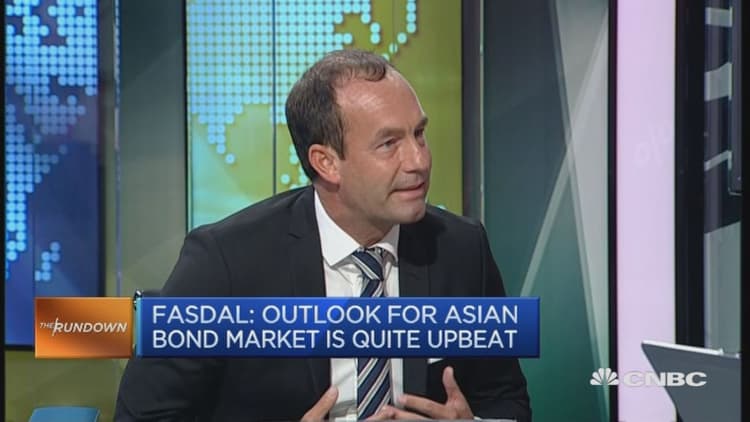Monetary policy decisions from the U.S. Federal Reserve and, more importantly, the Bank of Japan (BOJ), are expected to drive investor sentiment in Asia-Pacific this week.
While expectations for a Fed hike in September have abated somewhat following a series of soft economic data, growing uncertainty over what the BOJ would do is a likely source of anxiety for investors.
They would be seeking clarity from Governor Haruhiko Kuroda to determine how much firepower the central bank has left to support Japan's moribund economy, its appetite to purchase more government debt and its ability to tame a strong yen.
Both the Fed and the BOJ would begin their two-day policy meetings on September 20.
"It'd better be a very 'comprehensive' assessment from the BOJ," said Sameer Goel, who leads the Asia Macro Strategy team at Deutsche Bank, in a note. "It needs to carry with it either a well explained policy action, or (probably more likely) a strong statement of forward guidance."
Convincing skeptics would be a tall order. Goel said the BOJ needed to explain its intent and ability to address "concerns about illiquidity in the bond markets, and the profitability of the financial sector, without risking a perception of 'tapering'."
The controversial negative interest rate policy also looked set to be in play once again.
Last week, a report in the Japanese business daily Nikkei suggested the negative interest rate policy could become the centerpiece of future monetary easing, while the BOJ was considering a reduction in its purchases of long-term Japanese government bonds (JGB) with maturities longer than 25 years.
"We think that the BOJ will likely cut the rate to negative 30 basis points from negative 10 basis points," said Masaaki Kanno from JPMorgan Securities Japan. He expects the monetary base to increase to 90 trillion yen ($879 billion), from the current target of 80 trillion yen, and more J-REIT purchases to 200 billion yen.
In a September 5 speech, Kuroda publicly acknowledged for the first time that negative rates were affecting some sectors adversely, but maintained that the central bank would not hesitate to go ahead with them as long as they were necessary.




Analysts said a reduction in long-term bond purchases could be an attempt to steepen the yield curve in order to mitigate the costs of cutting rates further.
Negative rates usually eat into the profit margins of banks but a steeper yield curve would limit the damage by allowing banks to borrow cheaply and lend at a higher rate.
The Nikkei report sent long-term yields climbing; the 30-year JGB bid yield was up from 0.429 percent at the end of August to 0.569 percent on Friday; the 20-year bid yield was up 0.456 percent on Friday, from 0.339 percent on August 31. Bond prices move inversely to yield.
"Trimming the long-term JGB purchases is possible as yield curve has been extremely flat for quite some time, which weighed on the earnings of banks, pension funds and insurers," said analysts at Singapore's DBS Bank in a September 15 note.
They added it would be unlikely for the BOJ to reduce its total asset purchases, which meant the trimming of long-term JGB purchase would be complemented by possible expansion of "buying short-term JGBs, corporate bonds and/or other risky assets."
JPMorgan's Kanno agreed, saying he expected the BOJ to maintain its JGB purchases at 80 trillion yen, but to increase the buying of corporate bonds, local government bonds and Fiscal Investment Loan Program Institution bonds to achieve a 90 trillion yen increase in the monetary base.
A steep yield curve could weaken the Japanese currency, according to Hans Redeker of Morgan Stanley. In a note Redeker explained that it was the "negative-yielding, flat JGB yield curve undermining the financial sector and implicitly Japan's monetary velocity that pushed the yen higher."
Instead, a steep, financial sector-supportive JGB yield curve can help to lay the foundation for the yen to "terminate its strengthening trend and establish a longer period of yen weakness."
On tap this week
Tuesday
Japan - Start of the Bank of Japan two-day policy meeting
United States - Start of the Federal Open Market Committee two-day policy meeting
Wednesday
Japan - August foreign trade
Japan - Monetary policy decision
United States - Monetary policy decision
Thursday
New Zealand - Monetary policy decision
Indonesia - Monetary policy decision


